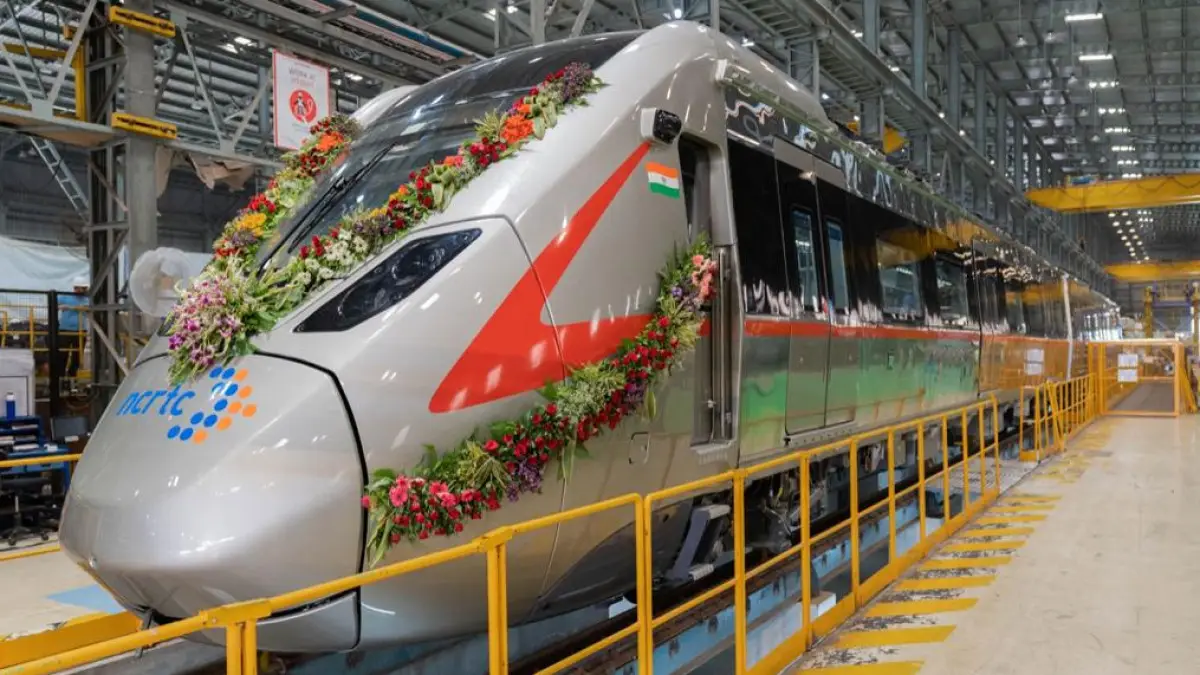
With first train ready, what India’s pioneering high-speed RRTS has on offer

The first train set of the Delhi-Meerut Regional Rapid Transit System (RRTS) was handed over by its manufacturer Alstom India to National Capital Region Transport Corporation (NCRTC) recently.
These state-of-the-art RRTS trainsets are being manufactured in India at the Alstom’s factory in Savli, Gujarat. With this, a 17-km high-speed track from Sahibabad to Duhai (Uttar Pradesh) will be prepared very soon as the trial of the first phase of Rapid Rail. The entire corridor, India’s first RRTS, is expected to be completed by 2025.
The trains, which will run every 5 to 10 minutes, will cover the distance between Delhi and Meerut via Ghaziabad in 55 minutes with 14 stops.
Design speed of 180 kmph
Officials said these will be the fastest trains in India with a design speed of 180 kmph and operational speed of 160 kmph. These RRTS trains will have an average speed of 100 kmph, as per officials. It’s expected that the Delhi-Meerut commute would be reduced to just under an hour with RRTS. Currently, it takes at least an average of 90 minutes to reach Delhi from Meerut via a passenger train.
RRTS trains will run with four and six coaches as per the requirements of the route, with one premium coach in each train and the rest being standard coaches. A coach will also be reserved for women.
Also read: Train accidents have come down sharply in 5 years: Railway data
The officials said, “The premium or business class coach will be more spacious and comfortable. It will have reclining seats. These premium coaches of RRTS trains will be accessible through a special lounge at the platform level. Ticket prices of the premium class will be higher than that of the standard class. Fare of both the class is yet to be decided.”
In-coach facilities
The coaches will have ergonomically designed 2×2 transverse cushioned seating and onboard wi-fi. There will be laptop and mobile charging facility at every seat, CCTV cameras, dynamic route maps and auto control ambient lighting system. These trains will also have features like heating ventilation and air-conditioning system.
For better accessibility, there will be a dedicated wheelchair and stretcher space located near the train doorway for easy access. The trains will be equipped with public announcement and display system, dynamic route map display, infotainment display, along with emergency communication facilities.
These trains are designed for modern visual and audio announcements, which orient passengers with information about the next stop, final destination, speed of the train among others.
Safety features
For safety purposes, there will also be fire and smoke detectors, fire extinguisher, and door indicators in the train. These trains will have automatic plug-in type wide doors reducing air friction and noise, the officials said, adding push buttons for the selective opening of doors on a need basis will also be available. This will eliminate the requirement of opening all doors at every station, which will save energy.`
The RRTS trains will offer panoramic view of the outside with double glazed, tempered large safety glass windows.
Given the high-speed train operations, all RRTS stations will have Platform Screen Doors (PSDs) for the safety of the passengers. The train doors will be integrated with PSDs, as per officials. During the journey, 25 stations are being prepared from Delhi to Meerut.
According to NCRTC officials, innovative Train Control Monitoring System (TCMS) technology as well as its predictive and condition-based monitoring features will enhance the fleet’s performance by providing extensive train-to-ground diagnostics.
“These RRTS trains would run under Automatic Train Operation (ATO) to provide a smooth ride with precise stopping accuracy and will also save energy,” an official said.
(With Agency inputs)


